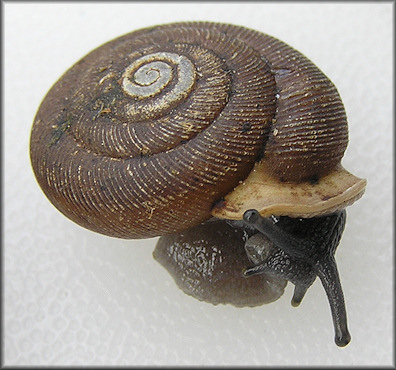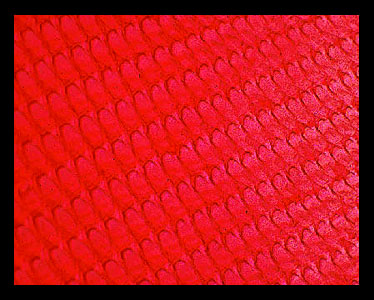
Adaptation
Triodopsis tridentata has gone through many evolutionary changes to make it a successful terrestrial snail. Gastropods, like the Northern Threetooth snail, have evolved a muscular ventral foot which helps with locomotion and attachment (Nordsieck, 2010). Land snails move by secreting mucus to help it glide along its path, making locomotion easier over forest grounds (Nordsieck, 2010). The mucus also helps the snail to attach to objects such as the underside of plants, trees, and rocks (Nordsieck, 2010).
Another danger snails face that they must adapt to is their skin drying out due to evaporation (Nordsieck, 2010). A snails slime prevents this from happening by coating the snail with a protective slime (Nordsieck, 2010). If weather becomes too dry, a snail will also find a hiding spot to survive the dry periods such as digging into the ground, crawling up plant stems, or hiding in crevices in bark and rocks where it is not as warm, which makes living in the Southern United States possible for Triodopsis tridentata (Nordsieck, 2010).
Terrestrial snails have a well developed sensory system that helps them survive (Nordsieck, 2010). They have specialized eyes, an equilibrium organ, and a specialized chemical sense organ (Nordsieck, 2010). Along with eyes, many gastropods have light sensitive cells on other parts of their body(Nordsieck, 2010). The equilibrium organ in snails is called a statocyst which helps the snail know its position in the world (Nordsieck, 2010). The chemical sense organ, called osphradia, is used to test water and find prey(Nordsieck, 2010). This organs purpose has been reduced because its main purpose was to test water and with snails now living on land, the osphradia is not needed (Nordsieck, 2010).
Triodopsis tridentata, along with many other snails, use a radula for feeding (Hickman, 2009). The radula is a rasping, protrusible, tonguelike organ that possesses many rows of tiny chitinous teeth that point backward to prevent things from slipping out (Hickman, 2009). A mollusc may have anywhere from a few teeth to as many as 250,000 (Hickman, 2009)! Pictured here is a magnified radula with many chitinous teeth, credit going to Rick Gillis for photograph. To learn about snail nutrition, click HERE!

